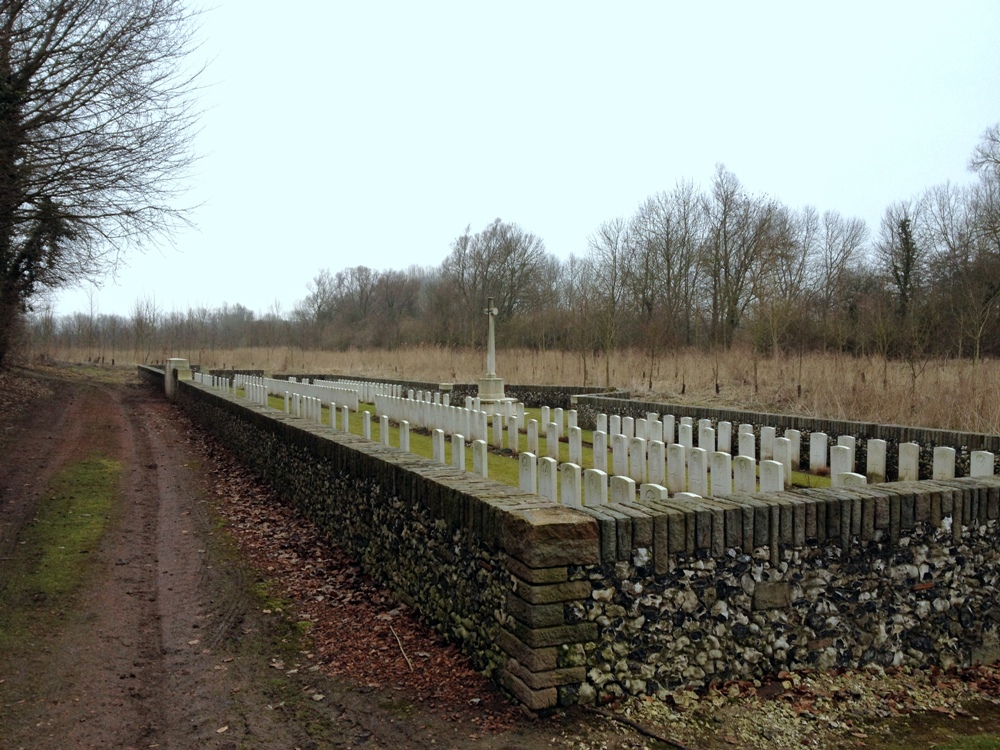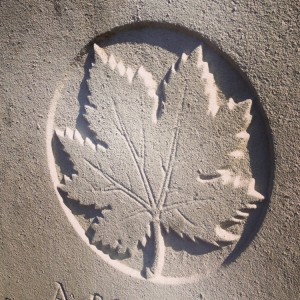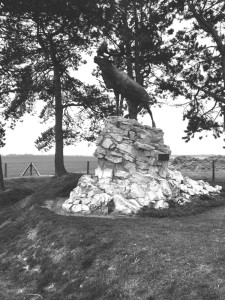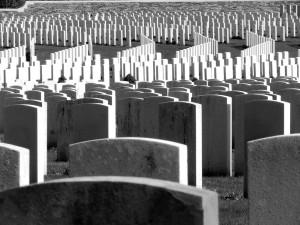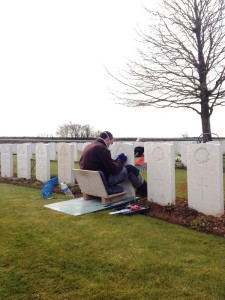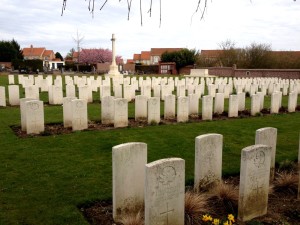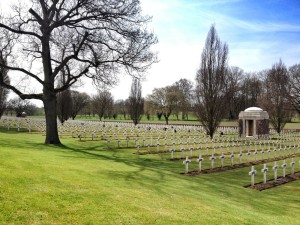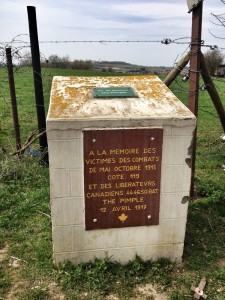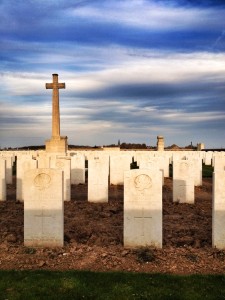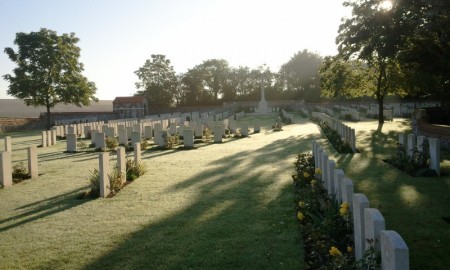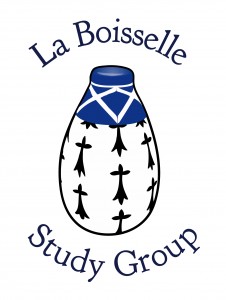Posts Tagged ‘Research’
Researching the war service of David Emanuel’s grandfather, John Leslie Emanuel, for BBC Wales ‘Coming Home’
In June I spent a day in Merthyr Tydfil filming with Yellow Duck Productions for their hit BBC Wales genealogy programme, ‘Coming Home’. Having worked with Yellow Duck on a previous series I was asked to research the wartime service of John Leslie Emanuel, grandfather to the fashion designer David Emanuel.
As was revealed in tonight’s broadcast, David never met grandfather who drowned in a tragic accident in December 1939. Whilst aware of his grandfather’s drowning, David had little knowledge of his wartime military service. We had a lucky start in that his grandfather’s service record survived. Using this and extant unit war diaries I was able to show David where his grandfather had served.
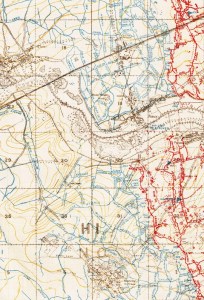
Trench map extract of the Roeux – Monchy area – positions occupied by 234 Machine Gun Company in summer 1917. Crump Trench runs just to the south of the railway line in the area west of the village of Roeux.
John Leslie Emanuel enlisted in February 1916 in the Sussex Yeomanry and proceeded to France in September of that year, joining the 10th Battalion Queen’s (Royal West Surrey Regiment). He soon transferred to 124 Machine Gun Company, spending six months on the Western Front, mostly in positions facing the enemy on the Messines Ridge. His active service was interrupted by his evacuation back to Britain, suffering from P.U.O. (pyrexia of unknown origin).
Four months later, having recovered, been promoted to Corporal and now serving with 234 Machine Gun Company, he again proceeded overseas. The unit war diary recorded the men swam in the sea off Le Havre (noting the water was warm!) before moving to the Arras sector. The Battle of Arras had ground to a bloody halt in mid May 1917 but isolated actions continued into the summer. The main British effort for summer 1917 was focused on endeavours in Flanders. However, this did not mean that 234 MGC had an easy time of it in Artois.

Extract from 234 Machine Gun Company War Diary 18 August 1917. Held at National Archives, Kew under Ref: WO95/1472/2 and reproduced with their permission.
The war diary is illustrative of the kind of routine and boredom of trench life but occasionally reveals periods of terror. 234 MGC was serving either side of the River Scarpe, providng support to the infantry occupying positions north of Monchy-le-Preux and in the village of Roeux, scene of bitter fighting in April and May. On 18 August an 8 inch German shell demolished a dug out near an anti-aircraft position in Crump Trench. Two of the occupants were killed outright but the machine gunners survived, despite being buried and badly shaken. A CWGC cemetery, named after Crump Trench now sits on the trench location.
A month later the company moved up to Flanders to take their part in the British offensive – the Third Battle of Ypres (Passchendaele). What struck me when looking at David’s grandfather’s story is that he was sent to a Corps rest camp for the entire period 234 MGC was in action near Langemarck. It is possible this period of rest was astonishingly good luck on his part. However, with the unit having undergone a fortnight’s training prior to their deployment north, it seems a strange time for a Corporal to be given leave. Detailed records are missing but it may have been that, after the rigours of the Arras sector, he simply needed a break. Despite popular modern misconceptions there was an appreciation of mental fatigue and it was understood that often men needed a rest away from the guns to recover. Put simply, no man whose mind was in a fragile state would have been of any use in the artillery war that dominated the Flanders battles. This omission may well have saved his life as the company inevitably took casualties when engaged in battle. Upon leaving Flanders 234 MGC returned to the Arras sector. In mid-December 1917 John Leslie Emanuel was sent back to Britain as a candidate for a commission. He never saw active service again, being discharged before the armistice.
David Emanuel gave an interview to Wales Online about his participation in ‘Coming Home’: http://www.walesonline.co.uk/whats-on/film-news/david-emanuel-war-hero-granddad-8149943
Having mentioned it in a conversation last night I realise that I have not updated my blog for over three months. This is in no way due to laziness on my part. In fact, I have never been busier and am working all hours. Just today I have turned down the chance to author a WW1 book and have been presented with the opportunity of working on what looks like a fascinating WW2 TV project. My blog silence is more due to the fact that the majority of work I am doing is related to upcoming projects, either those definitely agreed and commissioned or others in the pipeline and awaiting the final ‘yes’ or ‘no.’ So, simply put, for much of my work I am unable to provide any details.
Being fashionably late (well over a month) I thought it may be instructive to look back upon 2011 and see if things had moved on from the same point twelve months before. Whilst my accountant may not agree, things have stepped up in almost every department. The most startling event last year was the launching of the La Boisselle Study Group. It was in November 2010 when lecturing on the Battle of Arras at Wellington Quarry that Peter Barton and I were approached by Claudie Llewellyn, owner of the Glory Hole who asked if we would be interested in looking at the site. Naturally we jumped at the chance and my work in 2011 was dominated by the project. It was a relief in June when we could, at last, go public. After many nights burning the midnight oil the website was online. Little did we appreciate the interest in the subject with the BBC article receiving over a million hits and the LBSG the recipient of hundreds of emails. Throughout the traditional battlefield tours season I have been able to take guests to the site for a personal tour and it never fails to astound them. One of the earliest of these was writer Vanessa Gebbie, author of the brilliant novel ‘The Coward’s Tale’, who joined me in April for a tour as we followed the 14th Battalion Welsh Regiment (Swansea Pals) from the Somme to Ypres and back.
I had many trips to the Somme where I was able to enjoy the beauty of this magnificent and fascinating battlefield. In August, in a deviation buy alprazolam paypal from the norm, I headed further south with a client, Roland Parr, to follow in his great uncle’s footsteps. Roland’s Uncle Jack was Corporal John Thomas Davies VC. Amongst the many trips I undertook last year it stood out for me as we diligently traced the retreat of the 11/South Lancs to the point outside Eppeville where Jack performed the heroic action that earned him his Victoria Cross. The latter part of the year was primarily taken up with work at La Boisselle, including our successful week’s archaeological dig in October. Unlike my own site, the LBSG website has continued to grow as we add more and more information.
The year ended well as I was contacted by Wall to Wall Media, producers of the acclaimed ‘Who Do You Think You Are?’ series and asked to film on the new series, showing one of the chosen celebrities around the western front battlefields. The recce in December was cold, bleak and wet whilst we were blessed with cold, clear winter days for the three days filming in January. The programme is due for broadcast in the autumn.
With the build-up to the centenary commemorative period gathering pace I am heartened to see the interest from the public. Some of this may be due to Spielberg’s film ‘War Horse’ and the recent BBC adaptation of Sebastian Faulks’ ‘Birdsong’. Whatever the reason, I cannot think of a point in my lifetime when the public consciousness of the Great War has been so high. It will continue to grow as 2014 looms nearer and the plethora of planned books plus TV and radio programmes come to fruition.
Much of my planned research has been put on hold due to other commitments. It will be good to get back into the archives and I look forward to visiting many regimental museums later in the year. My next talk is a planned 45-50 minute lecture on the Battle of Arras, to take place on 4 April. Having spoken on the subject many times I should have no fear. The twist is that the lecture is to be given in French. Having been invited by the Tourist Office in Arras there was no way I could turn down the opportunity. Sadly, my spoken French is not up to sufficient standard yet so I will be practicing like mad between now and April!
Today sees the public launch of our ambitious project at the Glory Hole in the village of La Boisselle at the heart of the Somme battlefields. We have been invited by the landowners to conduct a long-term archaeological and historical study into the site, one of the most unique still extant on the western front.
BBC Breakfast and News 24 are covering the launch with Robert Hall on live feed from the Somme. He will be interviewing members of the La Boisselle Study Group (Peter Barton, Simon Jones and Iain McHenry) as well as one of the landowners who has given us this tremendous opportunity. Owing to other commitments I am not able to be on site today with my colleagues but am enjoying seeing the reaction in the UK.
For all details of the project please see our website: http://www.laboisselleproject.com/
The detailed article on the BBC website can be read here: http://www.bbc.co.uk/news/magazine-13630203


